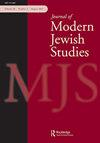在镜头前表演:表现米兹拉希人的男子气概和耶路撒冷社区的政治化,Katamon Tet
IF 0.4
0 HUMANITIES, MULTIDISCIPLINARY
引用次数: 0
摘要
1978年,摄影师Yàakov Shofar拍摄了来自Katamon Tet的十几岁男孩的照片,Katamon Tet是耶路撒冷米兹拉希地区一个贫困的社区。男孩们对着镜头调皮地表演。在其中一张照片中,一个男孩假装要掐死他的朋友,而他的朋友则用自己的身体和脸来滑稽地表达痛苦。这次会议的照片出现在Shofar的摄影书《Finding a Way Out》(1981)和《Born in Israel》(1984)中,作为一种社会参与的实践,反映了当时摄影的发展。本研究旨在揭示在《Katamon Tet》中未被提及的社会和政治事件之后被拍摄的青年的政治化,并表明这些事件对塑造图像至关重要。根据采访和蒂娜·坎普特(Tina Campt)的术语“黑人凝视”(The Black Gaze),我认为男孩们的表现反映了Shofar所代表的东西——一个享有社会特权的局外人。基于我对摄影和想象力的争论,我强调了男孩们的姿势是如何面对想象中的霸权凝视的,并重新唤起了对米兹拉希男子气概的主流刻板印象。男孩们表演的戏剧性与Katamon Tet的Ohel Yosef社区剧院有关,从那里出现了各种形式的政治化Mizrahi抗议。本文章由计算机程序翻译,如有差异,请以英文原文为准。
Acting out for the camera: performing Mizrahi masculinity and the politicisation of the Jerusalem neighbourhood, Katamon Tet
ABSTRACT Photographs taken in 1978 by photographer Yàakov Shofar portray teenage boys from Katamon Tet, an impoverished Mizrahi Jerusalem neighbourhood. The boys playfully perform for the camera. In one photo, a boy pretends to choke his friend, who uses his body and face to express pain comically. Photographs from this session appeared in Shofar’s photography books Finding a Way Out (1981) and Born in Israel (1984), addressed as a socially engaged practice, reflecting the time's developments in photography. This study aims to reveal the politicization of the photographed youth following social and political occurrences in Katamon Tet, which are unmentioned in the books, and to show that these were pivotal in shaping the images. Drawing on interviews and employing Tina Campt’s term, “The Black Gaze,” I suggest that the boys’ performance reacts to what Shofar represented – a socially privileged outsider. Basing my arguments on debates on photography and imagination, I underscore how the boys’ gestures confront the imagined gaze of the hegemony and reclaim mainstream stereotypes of Mizrahi masculinity. The theatricality of the boys’ performance is situated in relation to the Ohel Yosef community theatre in Katamon Tet, from which various forms of politicized Mizrahi protest emerged.
求助全文
通过发布文献求助,成功后即可免费获取论文全文。
去求助
来源期刊

Journal of Modern Jewish Studies
HUMANITIES, MULTIDISCIPLINARY-
CiteScore
0.70
自引率
0.00%
发文量
75
 求助内容:
求助内容: 应助结果提醒方式:
应助结果提醒方式:


